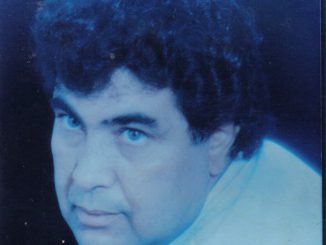
Boujemâa Ahkour, better known as Boujemii, was born in 1944 in Derb Moulay Cherif, Hay Al Mohammedi in Casablanca, into a poor family from Lamnabha, (Taroudant region). But the origins of this family go back to the Aït Dublal, nomads from the Draa Valley in southern Morocco, who used to move from one region to another. They settled in 1934 in Carrière Centrale, the beating heart of Casablanca at that time.
The financial situation of Boujmii’s family did not allow him to complete his studies, even though he had reached the fourth year of secondary school (the Brevet). As a result, he was forced to work in factories to help his father, but he never turned away from reading. He also associated with intellectuals, writers and activists. This gave him the opportunity to acquire good knowledge which helped him to understand the events of the time, commonly known as the leaden years.
Boujemii’s love of books is matched only by his passion for singing, poetry, theater and heritage. He was obsessed with folk songs, Halqa arts and Sufi chanting. He was also obsessed with “Daadoua”, his musical instrument which he never left until his death.
Boujmii’s artistic journey began with the theatre, when in the early 1960s he founded with friends, including Omar Sayyed, a theater troupe called “Rouwad al Khachaba”, before joining “Le théâtre municipal” in 1966, a troupe directed by the great playwright Tayyeb Seddiki and in which Boujmii has played many plays such as “Sidi Yassin fi attariq”, “Sidi Abderrahmane Al Majdoub”, “Al Haraz”, etc.
However, Boujmii’s dream was to found a musical group different from those existing at that time. This dream came true with the creation of “Nass El Ghiwane”, which Boujmii first called the “New Dervishes”. But this name didn’t appeal to Seddiki, the group’s mentor, or to the other members, including Mahmoud Saadi, Abdelaziz Tahiri, Omar Sayyed and Larbi Batma.
Boujemii, the dynamo of “Nass El Ghiwane” and its founder, performed with his group a number of masterpieces that have been engraved in the memory of Moroccans for several generations. These include songs such as “Assiniya”, “Fin Ghadi Biya Khouya” and “Ma hammouni”, among other controversial songs that are said to have led to his death by poisoning; a story that has never been proven true.




Be the first to comment